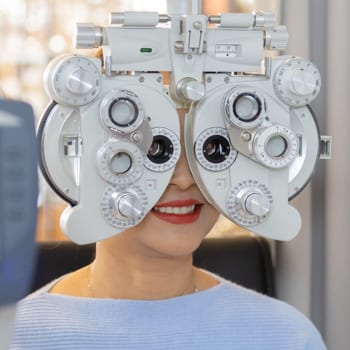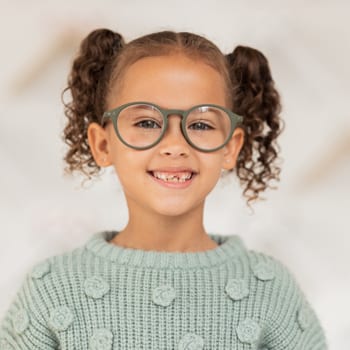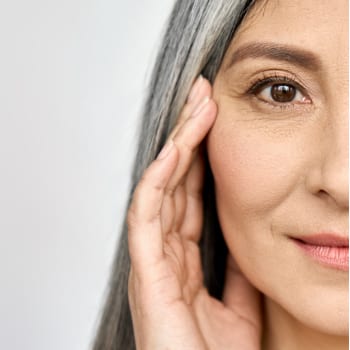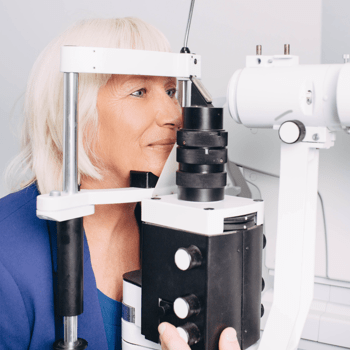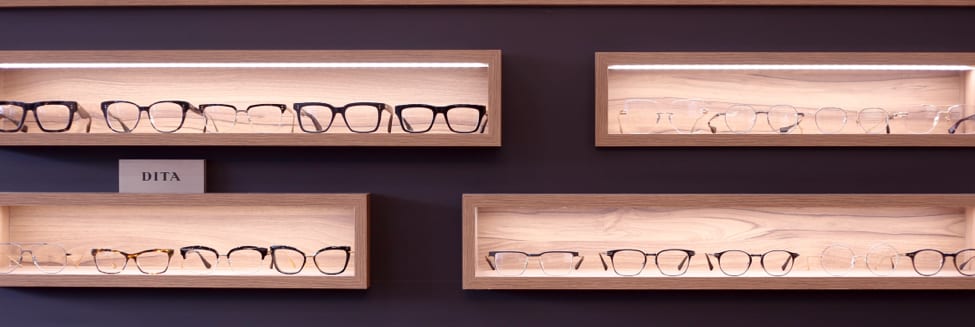If you or your child experiences visual struggles, your optometrist may recommend vision therapy to address these concerns. Vision therapy can help improve how well you see and process visual information, but how does this treatment work?
Continue reading to learn more about vision therapy, including what symptoms it can address and what it entails.
What Is Vision Therapy?
Vision therapy is a treatment program designed to improve visual skills and abilities. Many patients have great visual acuity (20/20 vision), but still have issues with their visual skills (eg. eye tracking, focusing, teaming). This can lead to difficulty with reading, sustaining attention or processing visual information.
Depending on the unique needs and goals of the patient, the optometrist creates a customized vision therapy program which involves a combination of in-office training with at-home exercises to improve underdeveloped visual skills.
Who can benefit from Vision Therapy?
Many visual issues are present in children as they grow, making vision therapy a common treatment for kids. However, many vision problems may go undetected into adulthood. Vision therapy is beneficial at any age, helping you process visual information more effectively.
It can be difficult to notice if your child has a vision problem. If they’ve had it for a long time, they may assume this is normal vision. Watching for signs of visual struggles can help determine if your child can benefit from vision therapy.
Consider booking an eye exam if you or your child:
- Avoids near work
- Feels tired or gets headaches or eye strain with reading
- Reads below grade level
- Loses their place or misses words when reading
- Has a trouble remembering what was read
- Confuses similar letters
- Reverses letters like b, d, p, or q
- Writes numbers backwards
- Judges depth poorly
- Notices fluctuating vision
If your optometrist notices a visual problem, they can recommend an effective treatment plan.
What Can Vision Therapy Help Address?
Vision therapy can help treat several eye conditions. Your eye doctor will determine if these treatments are beneficial for you or your child’s visual problems. Vision therapy commonly treats amblyopia, strabismus, and convergence insufficiency, but other conditions include:
- Double vision
- Eye teaming & tracking problems
- Focusing difficulties
- Eye fatigue
- Depth perception
- Eye-hand coordination issues
- Vision problems related to concussions
Amblyopia
Amblyopia occurs when the vision in one of the eyes doesn’t develop properly. Also called a lazy eye, amblyopia causes the more developed eye to become dominant during visual tasks. This condition is common in children, typically occurring between birth and age 7.
Your optometrist can identify signs of amblyopia during an eye exam. Afterwards, they may recommend vision therapy or another treatment to address this issue.
Strabismus
Strabismus occurs when the eyes don’t properly align, also known as crossed eyes. This condition can lead to double vision or amblyopia due to the brain ignoring one of the eyes. Strabismus typically develops in childhood, worsening with time if left untreated.
Strabismus is noticeable in children due to one or both eyes wandering. After your eye doctor diagnoses strabismus, they may recommend vision therapy to treat this condition.
Convergence Insufficiency
Convergence insufficiency is a condition where your eyes don’t work together effectively. One eye may turn outward while the other turns inward when looking at an object, causing blurred vision. This condition typically develops in childhood, but not everyone with convergence insufficiency experiences symptoms.
Your eye doctor can diagnose this condition during a comprehensive eye exam before providing a customized treatment plan. They may recommend vision therapy or reading glasses to improve your vision.
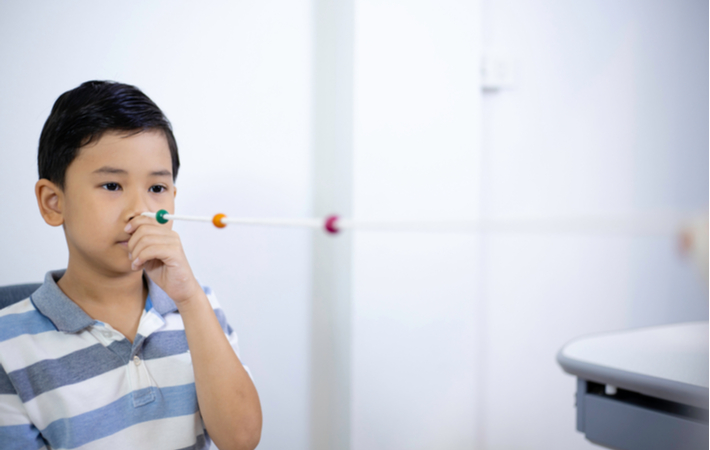
How Does Vision Therapy Work?
Vision therapy helps the eyes work together more effectively. The eye muscles may not be weak, but they may lack the coordination required to work well as a team. The goal of vision therapy is to:
- Retrain the weak aspects of someone’s vision
- Help improve visual comfort
- Change how someone processes and interprets information
Your eye doctor helps you achieve these visual improvements through in-office and at-home exercises. These exercises become more challenging with time as visual skills improve.
Along with these exercises, your eye doctor may use supporting tools and instruments during treatment, such as:
- Therapeutic lenses
- Filters
- Prisms
- Occluders or patches
- Electronic targets with timing mechanisms
- Balance boards
- Virtual reality programs
- Specialized tools designed for unique vision therapy activities
What’s Included in a Vision Therapy Program?
Each person’s vision therapy program depends on their unique needs. Your optometrist may recommend:
- Weekly 50-minute in-office treatments
- Progressive exercises or procedures performed under doctor supervision
- Exercises or procedures to complete at home
- Therapy training with advanced technologies
Vivid Vision
With today’s technology, virtual reality can help improve your vision. Vision therapy programs like Vivid Vision utilize virtual reality to treat amblyopia, strabismus, and convergence disorders. Your eye doctor can customize this program to meet your needs, creating exercises and assessments to improve your vision.
Experience the Benefits of Vision Therapy
Vision therapy can benefit someone’s vision, regardless of their age. Your optometrist can help set up a program to retrain the weak aspects of your vision and improve your visual comfort.
Contact your eye doctor to see if vision therapy is right for you.


